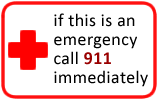Ear - Swimmer's
Ear - Swimmer's
Does this describe your child's symptoms? |
Definition
Symptoms
Causes
Return to School
|
If not, see these topics
|
When to Call Your Doctor |
Call Your Doctor Now (night or day) If |
|
|
|
Call Your Doctor Within 24 Hours (between 9 am and 4 pm) If |
|
|
|
Call Your Doctor During Weekday Office Hours If |
|
|
|
Parent Care at Home If |
|
|
HOME CARE ADVICE FOR MILD SWIMMER'S EAR |
White Vinegar Rinses:
Rinse the ear canals twice a day with ½ strength white vinegar (dilute it with equal parts warm water).
Start by having your child lie down with the affected ear upward.
Fill the ear canal.
Wait 5 minutes, then remove the vinegar rinse by turning the head to the side and moving the ear. (Exception: ear tubes or hole in eardrum.)
Reason: restores the normal acid pH of the ear canal and reduces swelling.
Continue until the ear canal returns to normal.
Pain Medicine: Give acetaminophen (e.g., Tylenol) or ibuprofen for pain relief.
Local Heat: If pain is moderate to severe, apply a heating pad (set on low) or hot water bottle to outer ear for 20 minutes (caution: avoid burns). This will also increase drainage.
Reduce Swimming Times: Try to avoid swimming until symptoms are gone. If on a swim team, it's usually OK to continue. Swimming may slow recovery, but causes no serious harm.
Contagiousness: Swimmer's ear is not contagious.
Expected Course: With treatment, symptoms should be improved in 3 days and resolved in 7 days.
Prevention of Recurrences:
Try to keep the ear canals dry.
After showers, hair washing, and swimming, help the water run out by turning the head.
Avoid cotton swabs. (Reason: Packs in the earwax. The wax buildup then traps water behind it).
If swimmer's ear is a repeated problem, rinse the ear canals after swimming with a white vinegar-rubbing alcohol solution (equal parts of each).
Call Your Doctor If:
Ear symptoms last over 7 days on treatment
Your child becomes worse
And remember, contact your doctor if your child develops any of the "Call Your Doctor" symptoms.
Updated:
March 22, 2017



